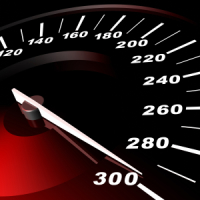A Web page’s loading time plays a great role in not only quickly delivering the information to the users but also helping the website owner increase the visitors to his website. Users want to see the Web page as soon as possible once they have clicked a link. If the Web page takes time, then users normally quit the page and go to another page for information.

There are various factors that effect the page load time, for example, the Web server’s hardware and operating system, software applications installed on the Web server, user’s own Internet connection speed, and the front-end code (such as HTML, CSS, JavaScript etc.) that lands in the user’s Web browser. In addition, all server makers such as Dell try to give best performance for their products.
It is nearly impossible to sum up all the factors in just one post; however, in this post we will be discussing a few good practices for front-end code. Optimizing front-end code is easy and hassle-free from the server tweaks and software installations, though it does require some programming skills. It is quite approachable and requires you to have a text editor, FTP client and an Internet connection.
There are many tools available online that can be used to uncover the Web page’s slow loading issues. These tools crawl the Web and point out the mistakes in the Web page’s code that are responsible for increasing the page load time.
1. Choosing The Right Image Format
Web page loading time is heavily dependent on the size of the Web page. Web pages with large size take time to load. For those who have less knowledge of the Internet, here is some background information.
When a user opens a Web page, first all the code and content of the page is downloaded to the user’s computer, and then it is displayed by the Web browser. It happens so fast that it is nearly impossible to figure out. So, as the Web page’s size increases, the page’s loading time increases as well.
Images participate tremendously in increasing the size of a Web page. Not all image formats have the same size while preserving the quality. Different image formats should be used in different scenarios.
For example, if you have a real-world photo such as a photo of an awesome landscape or of a hilly area, then you should choose the JPEG format. But if you are going to use a pie-chart, graph or a logo, then you should go with the PNG or GIF format.
2. Eliminating or Fixing Time Consuming Elements Of A Web Page
There are many tools available. Some are available online and some are browser based, as an extension. We can search for them on search engines. These tools help determine the time-consuming elements of a Web page including images, html files, javascript files and CSS files. Nowadays, a Web page is composed of different files.
Not all files are responsible for increasing the Web page’s loading time. Sometimes only a single file takes too long to load, so the user may want to eliminate that element. By using certain tools we can find out how many elements are hindering a page’s performance. Once these elements are identified, we can then fix them accordingly. One of the best ways to fix a slow speed element is to reduce its size. An element normally should not exceed 25KB for better performance.
Some of the tools are Firefox’s firebug add-on, PingDom, Google’s PageSpeed Insight and Yahoo!’s Yslow.
3. Minification
Minification is a technique in programming through which the performance of the Web page is increased. The performance is increased by minimizing the size of the source code through the elimination of white spaces. In programming, a whitespace can be a tab, new line or a space, and all of these factors participate in increasing the size of the file.
For example, this CSS code:
#body {
background-color: #000;
color: #fff;
border: 1px solid #000;
}
can be written as:
#body{background-color:#000;color:#fff;border:1px solid #000;}
You do not have to minify the whole Web page’s CSS manually. There are also tools available that can easily minify a code. Though this technique does not reduce the size of the source file tremendously, it is still very useful to increase the page’s performance.
4. Using Compressed Files
Files of smaller sizes travel through the network much faster than the files of larger sizes. Compressed files have considerably less size than the original file, therefore these compressed files travel faster than the original files.This technique of compressing files helps increase the page load speed.
Some shared Web hosting servers are equipped with the ability to compress files automatically. But in case your shared Web server does not have this capability, you can do so manually. If you have a dedicated server hosting or a VPS hosting, then you can take advantage of compressing the files by installing a software application, which will compress the files before sending to the Web browser.
If you have ever experienced compressing a text file and an image file, then you would have realized that text file is compressed to a great extent, but an image’s size is reduced only few bytes. If you want to reduce the image’s size, you have to tradeoff its quality.
Conclusion
Increasing the performance of the page depends on the hardware and the software on which the website is running. Besides this, the code and content of the website are also responsible for the performance of the Web page.
A well-written and optimized code along with lightweight content elements can make the Web page blazingly fast. Web pages with less code are more likely to load quickly into the user’s Web browser than the Web pages with many lines of codes.
